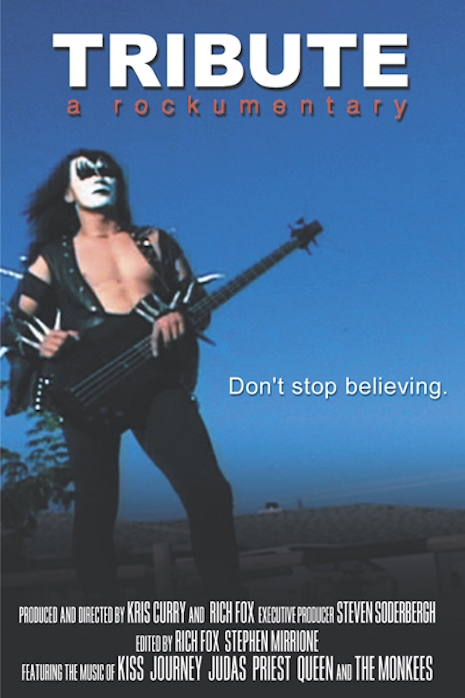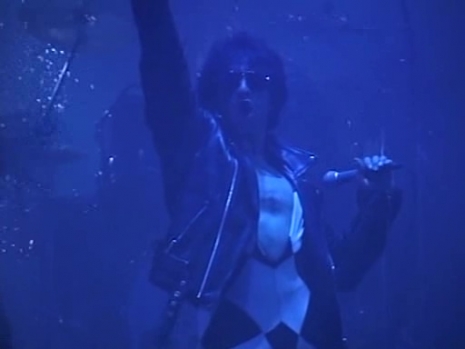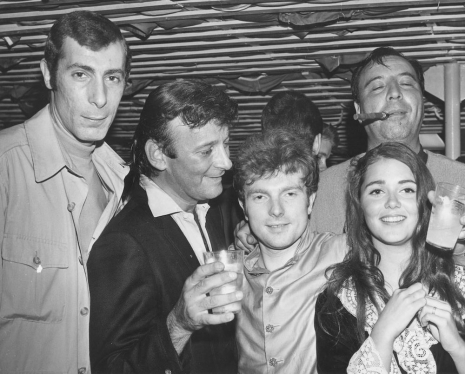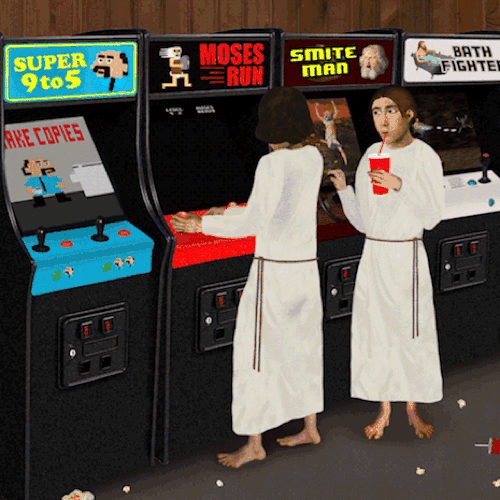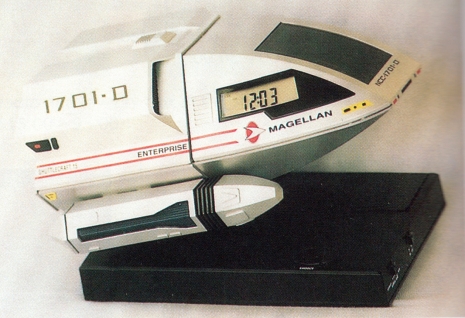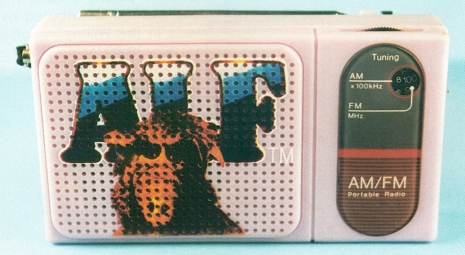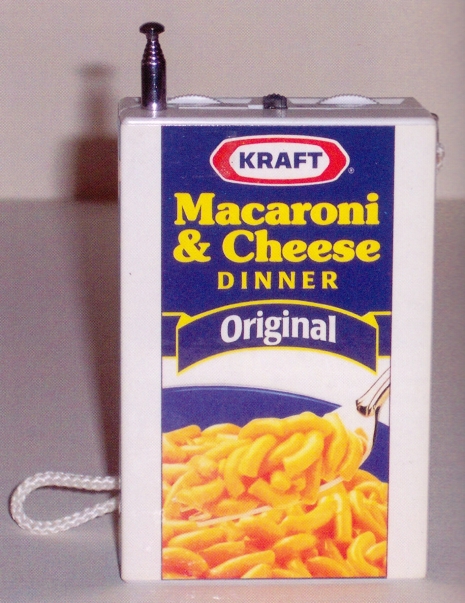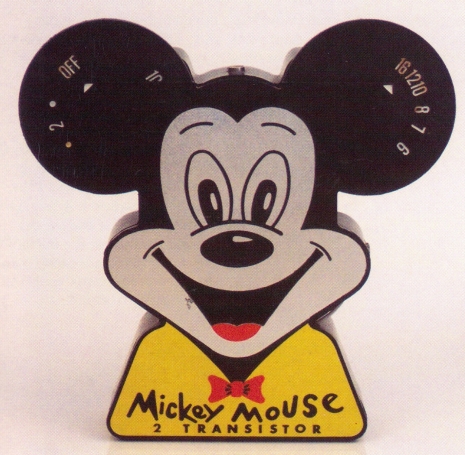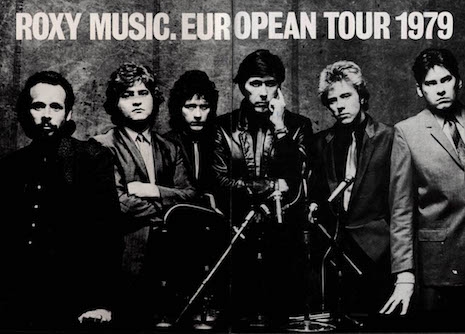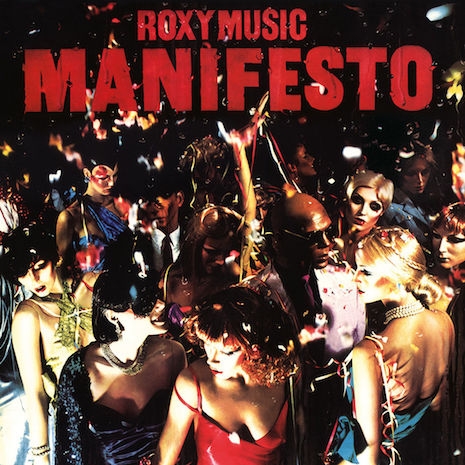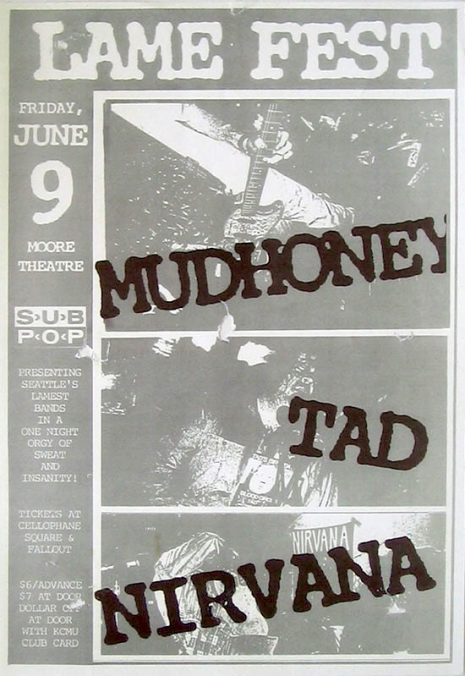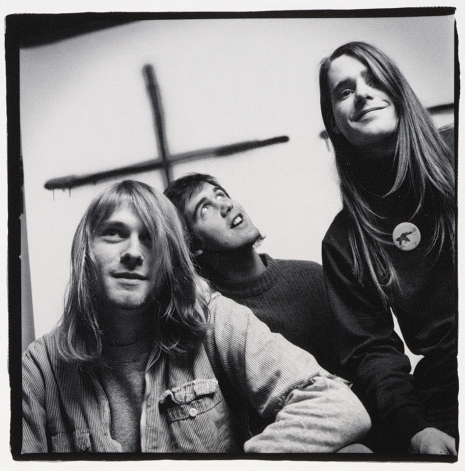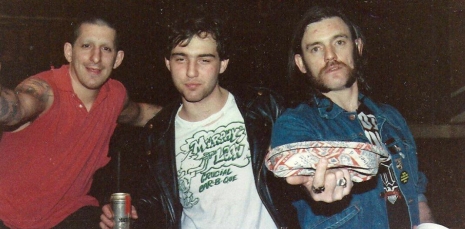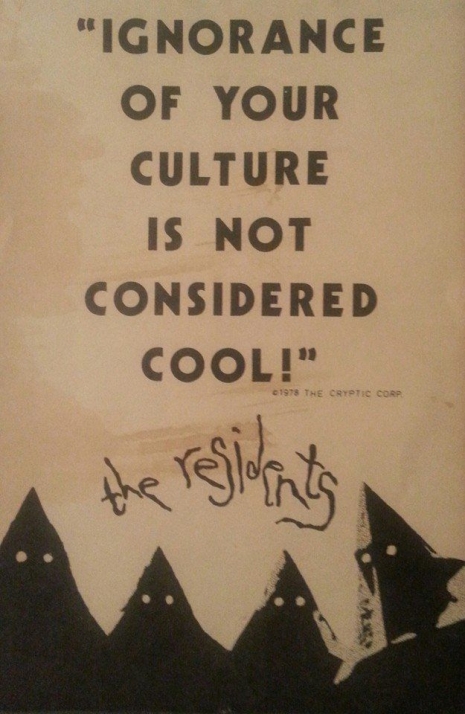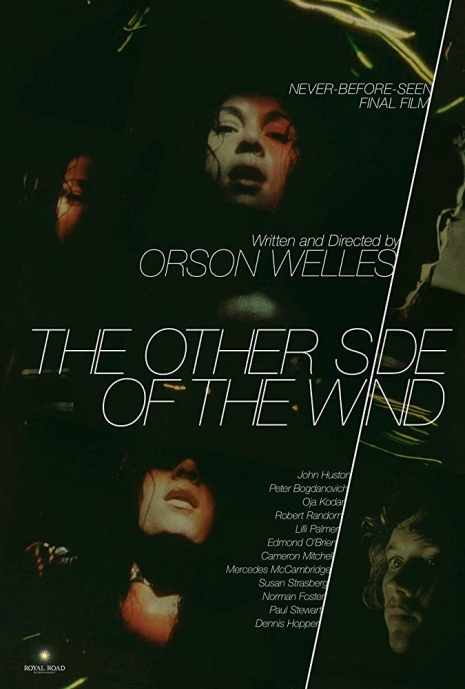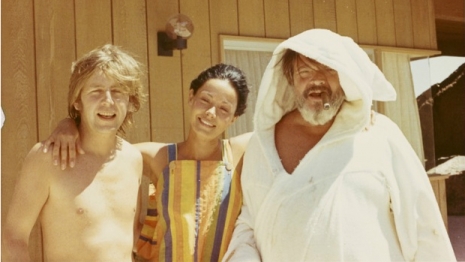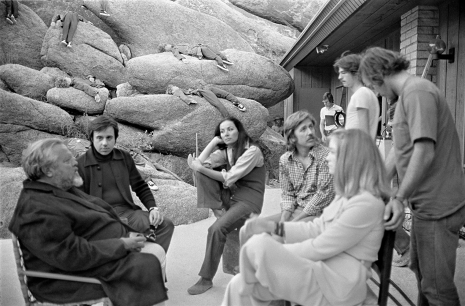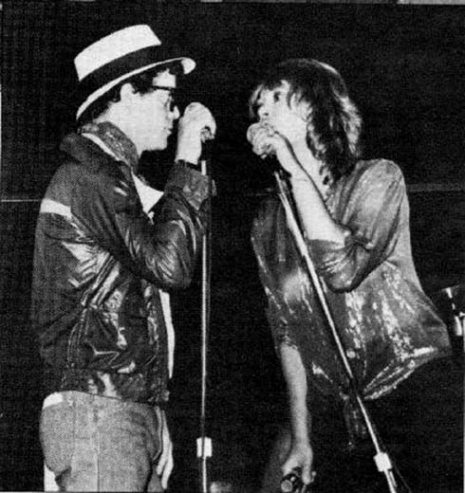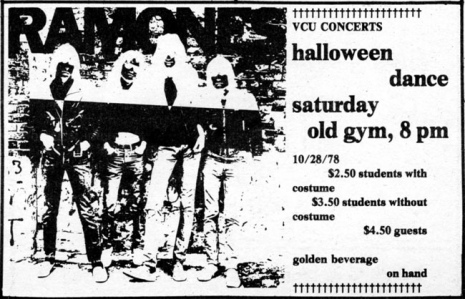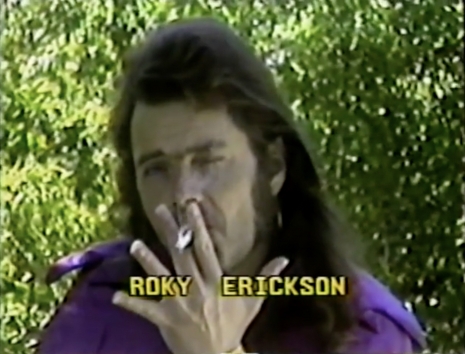
The fanzine Ben Is Dead was, and still is, a fucking LEGEND as far as ‘zines go so, interviewing founder Darby Romeo about her life and times was other-level-cool for me. Growing up in Los Angeles, certain things remain indelibly printed in my memory: driving by the enticing Anti-Club sign just before my mom got onto the 101 South, the sexy smell of leather jackets from rock shops on Hollywood Blvd, and this principle: comic book stores and coffee shops could be judged on quality based on whether you could find a copy of Ben Is Dead in their publications area. So therefore the mighty Bourgeois Pig, on Franklin Ave., rocked.
Ben Is Dead had collaborators from all walks of life, featured punk bands, performance artists and gender activists and didn’t believe that there was anything that couldn’t be talked about. It was an honest read and they had fun. Mostly run by women—and men who respected women—that, in itself, was something that my friends and I noticed. Ben Is Dead was a glowing engine that couldn’t be stopped—celebratory and wise-beyond-its-years, that ‘zine was a reflection of people, places and movements that were forces in and of themselves and could (and would) never be repeated again. It served as an unintentional documentary of life, art, culture and human existence in El Lay. And it was fucking cool, man.
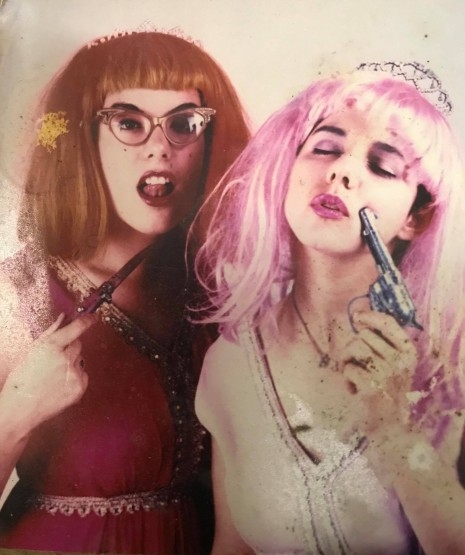
Lorraine Mahru, left, one of Darby Romeo’s many Girl Fridays from Ben Is Dead, and Darby Romeo, right.
Ben is Dead’s founder, Darby Romeo briefly went to Pierce College, studying to be a graphic designer but quit school to get a job. She was temping and developing computer skills with the MacSE40 that she got from her father when she ended up temping as a secretary at Grey Advertising. She told the art director at Grey that she had graphic design training, and they ended up hiring her as an art director. I asked her about the beginnings of Ben Is Dead.
Darby Romeo: In the late 80s, I was already making $25/hr at Grey Advertising, and my only good friend there was this comic and the guy in the mailroom who sent out all the Ben Is Deads for free. But that’s basically what paid for Ben Is Dead. So I got the computer from my dad, I got this job at Grey, and that was it because you didn’t really make money on it [Ben Is Dead and ‘zines in general] you just spent money on it. So Grey Advertising kinda started Ben Is Dead. And the LA Times doesn’t really know this but they kinda helped us do our first issue for us! My dad would’ve hated that we did this but I kinda considered it to be like pro-bono and that they should be supporting zines, y’know? But I remember that this was right before the first issue came out and I was talking to someone at Flipside [another well-known and beloved LA punk-rock fanzine] and I was like, “We’re gonna make 1000 issues!” or something like that and they [seemed unimpressed]. Cuz I didn’t know what I was doing! So someone from the LA Times snuck us in there at two in the morning and we printed another 1000 on the LA Times’ huge copy machines. So, thank you, LA Times! I don’t know what the statute of limitations on that is but, there’s a little known story!
How do you feel now that there is now a dedicated space at the UCLA Library Special Collections Punk Archive for the preservation and archiving of the entire Ben Is Dead collection?
Darby Romeo: I’m really thankful that this nerdy librarian lady came—what year did she come?—I think her name was Julie Graham, I can’t remember, but she would come over to the Ben Is Dead offices, I can’t remember the hook-up, but we would go through all the issues and I was looking at the archive and there were 78 boxes of ‘zines. We went through each one so that she could archive it. Like who would be that patient? We even archived the [letters to the editor] and included those, just knowing that there are people who are willing to do stuff like that—especially for ‘zines since they’re not online mostly, like 95% of the ‘zines are not online, and these libraries and people like her are vital! Having UCLA treasure these and keep them safe is amazing. So many of them are fading or falling apart or getting thrown away and in a few more decades those are going to be the only places besides your grandpa’s collection in the attic where you’re going to find them.
And we’re working on putting ours online but you can’t trust online as much as you can trust an archive that isn’t going to get tossed. Libraries are so important. And it’s so funny because in creating Ben Is Dead, we created it before there was an Internet. There was no Internet to find a photo, there would be a whole long process to print a photo! So it was a whole different thing creating ‘zines back then and having them in a place where we don’t have to worry if the Internet goes down, they’ll always be there, y’know?

A “Retro Hell Party” complete with Hostess HoHos. Party people include: Darby (blue dress), Reverend Al Cacophony (in black), Noel Tolentino of Bunnyhop (wearing a McDonald’s Grimace party hat)
What’s the difference between analog and digital research and how important were libraries to the creation of Ben Is Dead?
Darby Romeo:: We used the libraries much more back then than people do now… I just remember how much time I would spend in the microfiche section. I loved microfiche! I loved just sitting there and looking for old stuff and just going into the basement of the downtown LA Library and that smell and the old bookstores. But the libraries were important and the photos from Ben Is Dead—a lot of them were because my friend ran the photo department of AP. He was the archivist, basically of AP, so he’d slip us a bunch—so thank you AP for supporting Ben Is Dead!

While BID had many striking qualities, one unique aspect was the way it platformed the symbiotic connection that LA punk rock has with local queer icons and performance artists like Ron Athey and Vaginal Davis. Tell me about the Sean deLear video tribute that will be playing at the 30th anniversary Ben Is Dead Festival.
Darby Romeo: Stuart [Swezey, from Amok Books] was going to show Desolation Center [but then it was unable to be shown] and he came up with this bright idea and it’s so awesome and so touching because everyone loved Seande [Sean deLear] and Seande was such an influence in the scene and was such a big part of Ben Is Dead and played one of my favorite shows at Al’s Bar during our “Gross” issue. I love chickens now so I feel awful but everything was gross—we had chicken feet in bowls at the bar, and I remember people were throwing them at Seande and he was throwing them back during his set with Glue. Yeah, he was really vital. And we were all really shocked when he passed last year and we are really honored that Stuart is going to put together a documentary about his life because he did some interviews with him just before he passed for Desolation Center and stuff, so that will be playing early on in the day at the Zine Fest on Saturday.

Tell me some of your wildest Ben Is Dead stories…
Darby Romeo: A crazy story? Probably when Kerin wanted to interview Anton LaVey. I mean, you grow up goth dancing at Phases and Odyssey [local LA dance clubs] and all but I’m not into the REAL darkside or whatever. So [Kerin] was planning with Anton and his wife at the time a Ben Is Dead interview and he really liked the magazine. It was supposed to be me and her going [up to San Francisco] for the interview but at the last minute I’m like: Um, I don’t wanna meet Satan, nope, uh uh, I’m not going up there, nope nope nope! So I call up [Germs drummer] Don Bolles and I tell him that he has to go up there and do the interview instead and I’m just like freaking the fuck out. I just tell him “Go with Kerin and do this interview. She wants to do this interview.” And he said, “Okay, cool.” And then Anton said, “Nope.” It was like he knew I was petrified! He could just sense it! He was like we’re not doing the interview without Darby. And I was like “Nooooo!”
So we get to his house and they sleep by day and are up all night so we get there at night and he has this old house and it just smelled like Europe. We go in and we’re in the waiting area and his wife—Blanche was her name—she has her new baby with her and she leaves the baby alone in the room with us! So we go and check the baby to see if there’s a 666 on top of its head. We really did! They were so sweet and nice but Anton would not allow me to record the interview and that was like the worst nightmare because now you have to take notes and remember everything! The Anton LaVey interview was the only interview we ever did that we gave someone permission to approve. And the thing was, he didn’t ask for any changes, he just approved it!

So we go to his favorite restaurant—Olive Garden—and I’m still distraught, I remember begging them to let me use my tape recorder, I remember hiding it for a little bit at one point, I remember having it in the bathroom at one point talking into it, saying some of the stuff he’d already said, documenting it out of my mouth. Then we go back to the house and his other favorite thing was animal cookies—the frosted ones [Mother’s brand, pink and white with little sprinkles]. So we’re sitting there, he’s playing the organ, we’re eating animal cookies, and I’m trying to write notes and it’s going on all night because that’s their daytime because they sleep all day and I’m wishing that we still did drugs! But the piece came out great and he was happy and he was a really nice guy but I never ended up joining the Church of Satan or whatever.
You’ll probably never think of Olive Garden in the same way again.
There were a lot of stories around the “Sex” issue too [Most issues of Ben Is Dead had themes: the “Gross” issue, the “Broke” issue, the “Black” aka “Death” issue.] That’s when we actually started selling it and when we realized that we had a lot of fans. Like Jon Spencer was like, “Your “Sex” issue really inspired the Jon Spencer Blues Explosion,” um, what? Okay. Then we interviewed Malcolm McLaren and gave him the “Sex” issue and the same technological issues that just devastated us every single day—our voicemail system would sometimes just eat our voicemails—our voicemail being our Ben Is Dead Hotline which was how you found out about shows every week. So he calls and in his British accent he says, “Darby, this is Malcolm McLaren, y’know that ‘Sex’ issue I just want to tell you…” and it gets cut off! Fuck! What about the “Sex” issue? I go into the voicemail place and tell them that I need this voicemail back, where is this voicemail, and I think I got three months free and that was it!

Is it true that you promised Simon Le Bon from Duran Duran that you would find him a massage therapist?
Darby Romeo: I told him I would get him a masseuse and the one lady that I thought I hooked up cancelled! I had a couple Girl Fridays over the years, and Jessy, Jessica Jones, was one of them—so I was like “Jessy! I have to go over to Simon LeBon’s! Help me get dressed!” And I put that red velvet dress on and the Elvis Penis [a wig Darby nicknamed the Elvis Penis—it was huge and bouffant-style], she stuck flowers from the vase that we had that we had gotten from Mrs. Gooch’s [a local LA health food store] in my hair and I go and I get in the car and the wig is hitting the top of the car and I go and I drive over to the Beverly something—they always stayed there.
So I get there and I’m valeting the car and I didn’t even know at the time that you’re supposed to have a massage table, right? That would make sense? So I have sunglasses on, and the car guys are like what the fuck is this? And I think I had my Fluevogs on—yeah, my Fluevogs, it was tragic—with (of course) this bright red lipstick, and I go to Simon’s door, and I knock and he opens the door and he looks and I’m like [in fake European accent] “Hello, I’m your massage therapist,” and he looks at me and he’s like what the fuck is this? And he didn’t know what to do so he opened the door and he’s like, what the fuck? And he sees that I don’t have a massage table but I don’t know that that’s a thing.
I later go on to become a massage therapist—I’m now a licensed massage therapist, by the way—so I’m sitting there on the couch and he knows me but I’m all dressed up with the glasses and everything and we’re having this full on conversation and he’s just trying to figure out what to do with me. Like “Who sent you? Darby knows you? What are you…?” And after about ten minutes I just busted out laughing and told him, “I couldn’t get you a massage therapist, I’m sorry!” and the fucker made me massage him anyway! I’m in this velvet dress with this Elvis Penis wig, he takes off all of his clothes, puts a towel on the floor, lays there, and I’m like: I have no idea what to do so I’m just kinda mushing him and stuff? And I don’t even think I had massage oil? Anyway, he had a cute little butt and he was a very sweet guy but…he didn’t even tip me!

And of course I have to ask about I Hate Brenda…
Darby Romeo: The thing about I Hate Brenda—and people never got it right then and the only reason we did it—was that we were on the side of the victims. The victims were like security guards at clubs who were like, “God, we’re getting abused because she [actress Shannen Doherty who played “Brenda” on TV’s Beverly Hills 90210] was at the door, yelling at us because she’s not on the list and she’d be like, ‘Don’t you know who I am?’” and we just kept getting these stories and different stories [of Doherty terrorizing people] from labels and people in the scene and they just kept coming to us and we had no plans on doing a newsletter… at the time the fax machine was like social media so we made our version of a flyer or our version of a meme and it had Brenda on it and it said “I wash my hair in Evian” which was her thing and we pretended it was the “I Hate Brenda Newsletter” and we sent it out to everyone and they were like, “Oh my God! When is the I Hate Brenda Newsletter coming out? Oh you gotta include this and you have to interview Eddie Vedder! Oh you have to do this and dadadada and this story and this happened to me and all this stuff!” and that’s how that ended up happening. It’s not like we were really going to do anything but yeah. And what’s kind of weird in the scheme of things is that we would all go to bars or knock on the neighbor’s fucking door just to watch 90210. We’d be working in the offices and there was some model next door and we’d bang on her door and say, “No, you have to let us in! 90210 is on!”
Continues after the jump…







